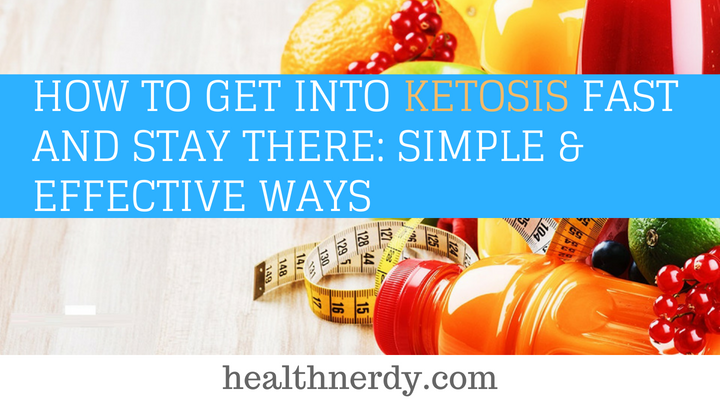
Ketosis has been shown to be very beneficial for our bodies and minds.
Help with type 2 diabetes, improved exercise performance, appetite suppression, and help for neurological disorders are just a few of its positive effects on our health.
The most important benefit of ketosis for the majority of people is probably weight loss.
You’ve seen your coworkers do it, your friends shed fat, and online bloggers gain a six-pack, all from scratch.
And now you want to hop on the bandwagon of lost weight, clear focus, and free energy!
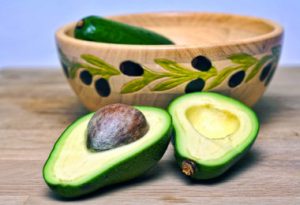 Well, who doesn’t?
Well, who doesn’t?
But! To reap all the incredible benefits of ketosis, you have to enter it first.
Unfortunately, no magic pill would kick you into a state of ketosis right away. There are, however, certain tricks that help you get you and your body into ketosis quickly.
And I’ve prepared only those that always work for me as well. Ready? Let’s have a look at how to get into ketosis fast and stay there as well!
What is Ketosis?
Plain and simple, ketosis is a metabolic state when your body starts breaking down fat for fuel instead of carbs.
Ketones are compounds that become your source of energy, the primary fuels, and the ultimate fuel source.
They occur naturally in our bodies when switching to a low-carb, high-fat diet.
How to Get Into Ketosis in 24 Hours
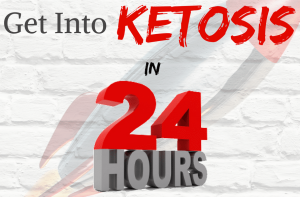 There are various ways of how to get into ketosis fast.
There are various ways of how to get into ketosis fast.
While these can help you burn fat in the long run, I’ve found the absolute fastest way that helps me induce ketosis in one day.
I’ve prepared a list of my personal favorite effective tips that will help you on your way to reaching ketosis without supplements.
1. Reduce Carbs to Less Than 5% of Total Calories
Number one factor that can help you achieve ketosis is a low-carb diet.
While you can still eat a small number of carbs even on the ketogenic diet, they will do more harm than good when you’re trying to get into ketosis fast.
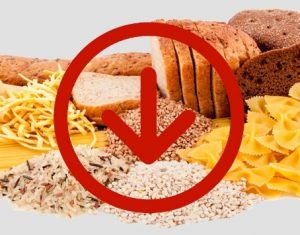 When your body is out of its usual fuel (glucose), it turns to a different energy source.
When your body is out of its usual fuel (glucose), it turns to a different energy source.
By burning ketones for fuel, you can experience fat loss and many other health benefits.
In short: how many carbs are allowed if you want to enter ketosis as soon as possible?
Well, I’d suggest cutting them down to an absolute minimum or zero, for the optimal result.
In my experience, this is probably the quickest way to get into ketosis via fat acids!
2. Healthy Fats Will Get You There
Healthy fats are one of the best ways to get into ketosis. Forget about the myths that fats and fat loss are enemies.
It’s quite the opposite! Think healthy fat, such as butter, coconut oil, avocado oil, olive oil, and many others.
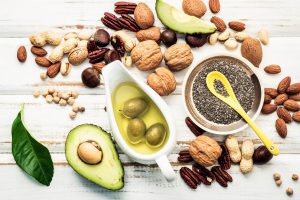 Last but not least, your MCT oil is your new companion, even when you travel!
Last but not least, your MCT oil is your new companion, even when you travel!
Which brand to take with you? Read to find out which is the highest rated mct oil available.
Keep in mind that all these fats have to be premium quality, forget about the heavily processed cheap fats.
Healthy fat can help you boost ketone levels and reach ketosis.
After all, on the keto diet, 60% - 80% of calories come from fat, compared to 20% protein and only 5% carbs.
What’s more, make sure to choose fats that are both animal and plant-based. Even if you’re vegetarian or vegan, healthy fats are easy to get!
3. Boost That Workout
The more active you are, the more likely you’ll enter ketosis. Workouts and regular exercise help your body reduce glycogen store levels.
The liver then boosts the ketone production which then serves you as the source of fuel for your muscles.
There are two types of exercise I’d recommend that can help you elevate the ketone levels, depending on your experience and physical performance.
 If you’re already a seasoned keto dieter, think HIIT (high-intensity interval training).
If you’re already a seasoned keto dieter, think HIIT (high-intensity interval training).
This type of training enables you to reach ketosis faster with its aggressive techniques.
With short bursts of exercise combined with a short period of rest, you can make the most of your exercise and burn max sugar with minimum effort.
However, if you’re entirely new to the keto diet, try to go easy on yourself and let your body adjust to the new lifestyle.
Go with TUT workouts instead. These workouts are known as “time under tension,” and you can easily combine them with easier slow cardio exercises (hiking, walking, easy jogging).
In any case, this study showed that exercising before a meal is more beneficial regarding elevated ketone levels than after a meal.
4. Think Fasting to Get Into Ketosis
Fasting is another good way to get into ketosis. It not only gets you there faster, but it also helps you to stay there much longer. There are a few different ways to fast:
Water Fast
 This is an excellent way to reach ketosis, but make sure that you listen to your body while you do it.
This is an excellent way to reach ketosis, but make sure that you listen to your body while you do it.
Also, you might lose some muscle mass during this fast, and it simply may not be for everyone.
In short, while on water fast, you basically avoid all foods for 12 to 24 hours.
You are only allowed to drink water, and your body will take care of the rest (namely sugar glycogen stores).
Intermittent Fasting
This type of fasting allows you to balance the cycle of eating and fasting.
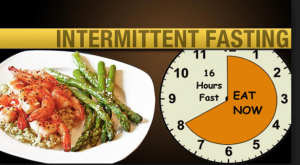 There have been some studies that confirm many benefits of this type of fasting, including weight loss, cardiovascular and metabolic health.
There have been some studies that confirm many benefits of this type of fasting, including weight loss, cardiovascular and metabolic health.
A popular form of intermittent fasting is the 16/8 method, which means that you fast for 16 hours and eat during the 8-hour window.
It may sound difficult, but it’s actually an easy thing to do.
For example, you can stop eating at 8 PM, skip breakfast the next morning and start eating at 12 PM the next day.
While you fast, you should avoid all food, but liquids without any calories are allowed.
Fat Fasting
Fat fasting means that you stick to 1,000 calories a day max, but 85% to 90% of these come from healthy fats.
The combination of high fat and low-calorie intake can induce ketosis quite quickly.
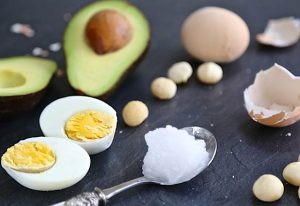 It’s advised that you stick to the fat fasting method only for a few days at a time, ideally two to four.
It’s advised that you stick to the fat fasting method only for a few days at a time, ideally two to four.
I wouldn’t recommend you to try fat fasting any longer than that unless you want to put your body into starvation mode and begin to lose muscle mass.
There has only been one study that reported a huge increase in fat loss on this fast, but it seems a bit unrealistic.
There isn’t enough official evidence to scientifically support the fat fasting method, but there are numerous keto dieters online that beg to differ.
5. Reduce Protein To a Minimum
Reducing carbs to a minimum is not enough if you want a quick escape into ketosis. You’ll have to work on your protein intake as well.
It’s a bit of a slippery slope, our protein intake. Eating too much of it can make it more difficult for you to enter ketosis.
At the same time, eating too little can affect your muscles, causing muscle mass loss.
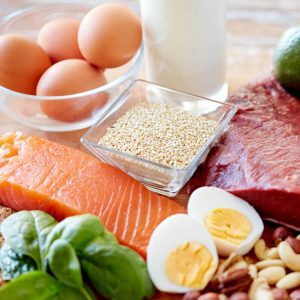 There are different ideas of how much protein you should consume to get you into ketosis.
There are different ideas of how much protein you should consume to get you into ketosis.
But there have been several studies that concluded the ideal protein intake is 0.45 gram per one pound (1 gram per kg) of your own body weight.
That would make 70 grams per day for 70 kg of body weight.
Apart from all these tips, it’s a quite common practice to enter ketosis with supplements.
Take exogenous ketones supplements and MCT powder, think about your diet.
The exogenous ketone supplements (ketone salt supplements)can also ease the whole keto flu process and help you burn calories faster.
They also help you get back into ketosis after a carb-up.
Signs You Are in Ketosis
So you’ve followed all of the above tips, and you’re ready to make the change and lose weight. But how do you know when your body is in ketosis?
Some signs can tell you you’ve reached the fat-burning stage.
The easiest way to check is to test your ketone levels. You can measure blood ketone levels, breath, and urine ketone bodies.
While urine is a very popular method, blood measurement might be the most reliable one.
Apart from this, the symptoms of ketosis include:
- Bad breath (keto breath) that smells a bit fruity
- Weight loss already during the first week
- Increased ketone levels in your body (ideally between 0.5 -3.0 mmol/L)
- Loss of appetite and hunger
- Increased energy and focus
- Problems with digestion (diarrhea or constipation)
- Insomnia and poor sleep
How To Stay In Ketosis
Once you’ve reached ketosis, ideally, you want to stay there and reap all the benefits it has in store for your mind and body.
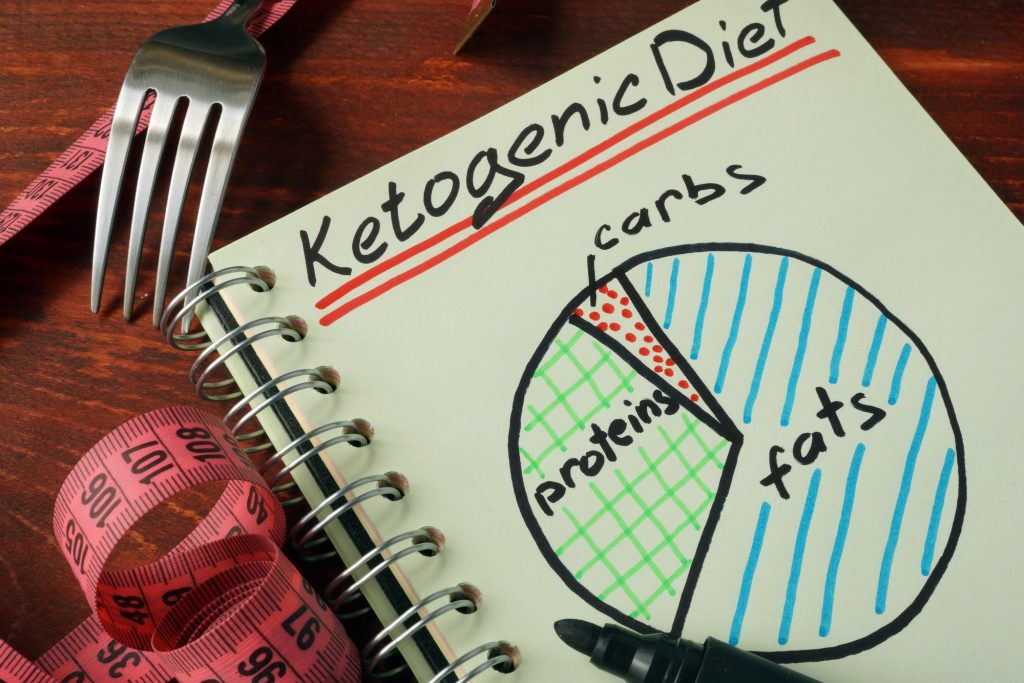
With a careful and well-organized meal plan, enough liquids, electrolytes, and a kick of ketone supplements, you’ll easily maintain ketosis and make the most of it!
Here’s how to stay in ketosis:
- Lower your carb intake and forget about the foods that are rich in carbs (keep track of your carbs; calculate the carb intake daily)
- Balance your protein intake (not too much and not too little, keep it moderate)
- Stack up on the healthy fat intake
- Test your ketone levels (don’t stumble in the dark, measure your ketones to see where you are, and adjust the diet when necessary)
- Try intermittent fasting
- Take ketone supplements, including BHB salts
- Don’t forget about a regular workout
- Exercise more when you eat carbs
- Get a good amount of sleep
Why Can’t I Stay in Ketosis?
You will need to drink about 1.5 cups of blood and keep the rest in your body. This may seem like a lot of liquid, but a two-ounce glass of water should work just fine. Weight Gain. To stay in ketosis, you must consume enough fat to burn fat as your fuel. To increase your fat intake, you can replace other foods with fats, such as protein bars, to help suppress hunger. Once you begin this transition, you can eat as much as you like. With the right diet plan, you should be able to keep the levels of glucose and insulin in your blood constant without going into starvation mode. If you stay in ketosis, the drop in your blood sugar should last until the next meal.
Diet Progression. Once you are able to tolerate this new, more efficient diet, you will switch over to the next phase. This is called the Rapid Fat-Burn Diet. The difference is that you don't eat any fat in this phase; your primary fuel is fat. On this diet, you eat as much fat as you can tolerate with the hope of burning fat more efficiently. At the conclusion of the first phase, you will eat the same amount of fat. Then, you transition to the third phase, which allows you to eat the same amount of fat as you do now, but your carbohydrate intake will be lower and your carb limit will be increased. For example, instead of being restricted to 3,000 calories per day, you will be restricted to 2,500 calories a day. Once the third phase is completed, you will be in maintenance mode and can maintain your eating patterns indefinitely.
What Happens If You Don’t Eat Enough Fat on Keto?
If you don't eat enough fat on keto, you may experience the following signs: You aren't able to lose weight (The diet begins by first eliminating all carbs and fat for 7 days). You lose energy, no matter how hard you work out or how fast you run. You get headaches. You can't shake a cold or flu. You experience stomach problems like nausea or cramping. You get stuck in a cycle of weight gain and loss that requires you to continue a vicious cycle of dieting and restrictive eating. Your bones or muscles do not fill out as they should. You can't feel hungry, and thus lose your motivation to work out. You are hungry all the time.
Your blood sugar is always too high. Your cholesterol level or blood pressure gels up when you are eating a low-carb, high-fat diet. Your muscles turn to fat in response to the diet. The Keto Diet and Eating A Whole Foods Diet Together. In this Keto Diet article, you will learn how you can eat a whole foods diet while taking the Keto diet. For this, you will need to start off with eating a whole foods diet in the beginning (instead of a low-fat/whole foods diet) for about 6 weeks. Then, when your blood sugar levels do up. You have frequent yeast infections. You get constipated. You have heart palpitations.
How Long Does it Take to Get Into Ketosis When Fasting
I've probably killed myself and wrecked my kidneys by the state of ketosis I was in during the summer. I was so obsessed with my (prodigal) hair growth, I only slept in the comfort of my dorm room about 3 nights a week. This was in large part because I was more than happy to pay $1 for a "free" oatmeal cookie that tasted like dirty socks, and that did nothing for me in terms of weight loss.
Fortunately, I had an endocrinologist on speed dial. So she hooked me up with a doctor who prescribed Metformin, a weight loss drug that's also used as a diabetes drug. I basically had to eat about 6,000 cookies a day to get my blood sugar under control. It was ugly. Now, a healthy, active 26-year-old who takes a quick break from swimming to eat a snack has a few options for when she's fasting. She can drink a protein shake and maybe.
When Does Ketosis Start When Fasting?
With a fast, you are not going to have access to any food or beverages. However, there are times when your body needs to increase its levels of ketones. This is when ketosis starts. Ketosis usually begins after a person breaks their fast. However, it can also start while you are fasting. How Much Of Ketosis Do You Really Need?
When a person is in a state of ketosis, they will burn fat while being hungry. This way, you will not feel any hunger or get hungry. This is because your body can store fat. However, if you want to lose weight, you must eat food because your body needs to burn fat. So, how much of this is necessary? You have to eat enough in order to get enough calories. On the other hand, you should not let the body overdo it. A number of people get very bloated if they consume too many ketones and do not burn any of it. The body can store it and become very bloated.
How Long to Get Into Ketosis After a Cheat Day?
The time it takes to re-enter ketosis after a cheat day can vary depending on several factors, including individual metabolism, the extent of the dietary deviation, and overall adherence to a ketogenic lifestyle. Ketosis is a metabolic state in which the body primarily relies on fat for energy due to a low-carbohydrate intake. When you have a cheat day and consume a significant amount of carbohydrates, it temporarily shifts your body out of ketosis.
Typically, it can take anywhere from a few days to a week to re-enter ketosis after a cheat day. During this period, your body needs to deplete its glycogen stores and switch back to utilizing fats for energy. This transition depends on various factors:
- Carbohydrate Intake: The more carbohydrates you consume on your cheat day, the longer it will take to deplete glycogen stores and re-establish ketosis.
- Individual Metabolism: People with a faster metabolism may return to ketosis more quickly than those with slower metabolisms.
- Physical Activity: Engaging in exercise can help deplete glycogen stores faster, potentially expediting the return to ketosis.
- Hydration: Staying well-hydrated is crucial for the efficient breakdown of stored glycogen.
- Prior Keto Adaptation: Individuals who have been following a ketogenic diet for an extended period may re-enter ketosis faster due to their body's increased metabolic flexibility.
To speed up the process, consider reducing your carbohydrate intake, increasing physical activity, and maintaining proper hydration. Regular adherence to a strict ketogenic diet is key to achieving and maintaining ketosis. Remember that individual experiences can vary, so patience and consistency are essential in resuming ketosis after a cheat day.
How To Achieve Ketosis Without Following A Keto Diet
"Achieving ketosis without following a keto diet is possible through various dietary and lifestyle strategies that promote the production of ketone bodies in the body. Ketosis is a metabolic state characterized by elevated levels of ketone bodies in the blood, which occurs when the body shifts from using glucose as its primary fuel source to utilizing fats for energy."
One approach to achieving ketosis without strictly adhering to a ketogenic diet involves reducing carbohydrate intake while increasing fat consumption. This can be achieved through a low-carbohydrate, high-fat (LCHF) or modified Atkins diet, which limits carb intake to induce ketosis without the strict macronutrient ratios typically associated with a traditional ketogenic diet.
Intermittent fasting is another strategy that can promote ketosis by depleting glycogen stores and increasing the mobilization of fatty acids for energy production. Fasting periods, such as alternate-day fasting or time-restricted feeding, can help initiate ketosis and may be combined with low-carb or high-fat meals to sustain ketone production.
Regular exercise, particularly high-intensity interval training (HIIT) and resistance training, can also enhance ketone production by increasing fatty acid oxidation and promoting metabolic flexibility. Engaging in physical activity while following a low-carb or LCHF diet can synergistically promote ketosis and improve metabolic health.
Consumption of medium-chain triglycerides (MCTs), such as MCT oil or coconut oil, can rapidly elevate blood ketone levels and induce ketosis without the need for strict carbohydrate restriction. MCTs are quickly absorbed and metabolized by the liver, where they are converted into ketone bodies, providing a readily available source of energy.
Supplementing with exogenous ketones, such as ketone salts or ketone esters, can also promote ketosis without dietary restrictions. Exogenous ketones are synthetic ketone bodies that can elevate blood ketone levels and mimic the metabolic effects of fasting or carbohydrate restriction.
Stress reduction and adequate sleep are essential for supporting metabolic health and promoting ketosis. Chronic stress and poor sleep can increase cortisol levels and impair glucose metabolism, hindering the body's ability to transition into ketosis. Practices such as mindfulness meditation, deep breathing exercises, and prioritizing quality sleep can help optimize metabolic function and facilitate ketone production.
In summary, achieving ketosis without following a keto diet is possible through various dietary and lifestyle strategies that promote ketone production and utilization. These include reducing carbohydrate intake, intermittent fasting, regular exercise, consumption of MCTs or exogenous ketones, and stress management techniques. However, individual responses to these strategies may vary, and it's important to consult with a healthcare professional before making significant changes to your diet or lifestyle.
How to Get Into Ketosis Fast: A Recap
Ketosis can be reached quickly but you need to be disciplined. That involves a strict meal plan, a good workout schedule, and fasting.
You can additionally boost your weight loss with ketone supplements as well! Make sure to track your carb intake and don’t overdo the protein.
Calories matter and so do the ketone levels in your blood and urine.
Learn to constantly track these to get a confirmation on whether you’re in ketosis or not. In case you’re not, you might be doing something wrong, so change your plan.
With proper planning, you’ll be burning fat in no time, enjoying your new lifestyle, and becoming healthier and more self-conscious!